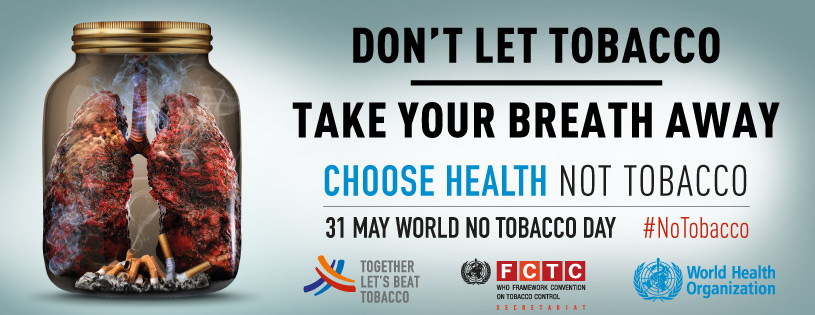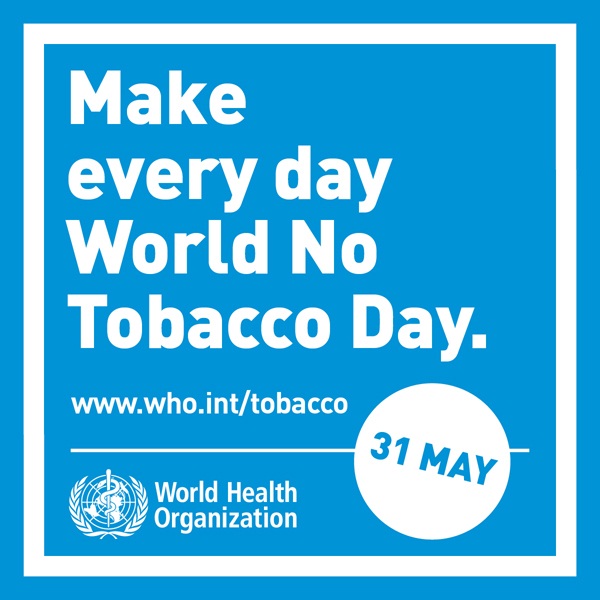There is now irrefutable evidence of the devastating health impacts of smoking, as well as a long list of health consequences and diseases caused by smoking and second-hand smoke. Tobacco is now linked to 25 different diseases, and is the major cause of lung cancer, bronchitis and emphysema.
The World Health Organization (WHO) World No Tobacco Day falls on 31 May. It is a call to action, advocating for effective policies to reduce tobacco consumption and engaging stakeholders across multiple sectors in the fight for tobacco control.

Dr Yvette van der Eijk was one of the event’s panellists and we found it fitting to talk to her today. She is a Senior Research Fellow and one of the academics within the School who leads in the area of tobacco control. Yvette gives us her reflections on the dynamics between tobacco control measures and the tobacco industry, through the research she has undertaken.
Looking back on the work you’ve undertaken, which piece stands out as most memorable?
The tobacco industry document research definitely stands out, mainly because it gives us real insight into how the tobacco industry ‘thinks’ and how unethical and relentless their strategies are. For example, when I was researching the tobacco industry’s targeting of Singaporean teenagers (as young as age 15) with menthol cigarettes, their marketing research reports would refer to them as “starters” or “entry smokers”, not schoolkids who should be protected from these addictive and deadly products. I uncovered a story of how RJ Reynolds had taken away Singaporean “starters” from Philip Morris, and how Philip Morris was trying to get them back. According to Philip Morris, they were to be “carefully researched” and lured back to the Marlboro brand with new menthol variants, because they knew from their own research that menthol cigarettes are more addictive. The direct and unabashed targeting of children to get them to become life-long cigarette addicts continuously motivates me to shine a light on the approaches that the tobacco industry uses to develop and market novel products to young people.
What are you currently working on?
We are researching in depth the tobacco industry papers released through whistle-blowers and litigation against the tobacco industry. There are over 80,000 papers mentioning Singapore. Using these papers, we look at some of the industry’s marketing activities in Singapore, such as their targeting of Singaporean youth. In a nutshell, the tobacco industry wants more new smokers, to sell more tobacco, and to make smoking as appealing and as addictive as possible. Learning how they do this will enable us to more effectively identify and implement countermeasures.
We are also researching how tobacco companies might respond to Singapore plain packaging. For example, following plain packaging implementation in other countries, the tobacco industry focused more on the cigarette stick design such as developing flavour ‘capsules’. This is similar to the trends we see from the tobacco industry papers, where the industry continually evolves to reduce the impact of tobacco control measures on their sales.

If you could make one change to positively impact public health what would it be?
To go further and faster on tobacco control measures that are evidence-based and known to work, such as banning menthol and other flavours in cigarettes, and more protective measures for second-hand smoke. Alongside this I’d like to see a continual cycle of review of legislation to ensure it covers loopholes that the tobacco industry will use and reflects changes to products and marketing from the industry.
Banning menthol cigarettes, which make up 48 per cent of cigarette sales in Singapore, as well as other tobacco flavour products could result in a big drop in Singapore’s smoking prevalence especially among young people. Research in multiple countries consistently finds that menthol cigarettes appeal more to children than older adults. Singapore has the largest menthol tobacco market in the world. The huge market share of menthol cigarettes in Singapore is, most likely, due to specific marketing by the tobacco industry.
It was during the 1980s that the government’s anti-smoking campaigns created a more health-conscious younger generation. The tobacco industry responded by marketing menthol cigarettes as “safer” — packaging them in attractive blue and green colours and using words like “fresh”. Menthol masks some of the unpleasant harshness when people first try smoking, making it easier to start smoking — the ideal product to promote to younger people and create life-long smokers.
Interestingly, most “regular” cigarettes also contain low levels of menthol and the tobacco companies keep making new product designs to make their cigarettes as attractive to young people as possible. Capsule cigarettes, for example, are a new type of cigarette with a flavour capsule in the filter that, when you crush it, flavours the cigarette. In Singapore, tobacco companies have started selling all sorts of these capsule cigarettes. One brand even comes in a ‘pick-and-mix’ pack with a mix of different flavours. When I first saw it, it reminded me of the pick-and-mix candy packs I would buy when I was younger, on the way home from primary school.
Any legislation developed in Singapore to ban menthol and other flavoured tobacco products needs to be crafted to allow for continual review and updates, as the tobacco industry is fast to develop and market products that sit outside of bans (e.g., selling flavours separately from the cigarette product).
What’s been the biggest change you’ve seen in your research area over the last five years?
The unity and ‘one voice’ of the tobacco control movement and leadership in public health, academia and government has been disrupted through the polarised debate around harm reduction in smoking. Tobacco harm reduction refers to e-cigarettes and other alternative nicotine devices that reduce the health risks associated with tobacco smoking but still deliver nicotine.
In the US and UK, e-cigarettes are freely available. There is a huge range of unregulated products available with varying levels of nicotine (and other chemicals) and an increasing number of younger people are using these products. The long-term health impacts are not yet known.
Singapore has banned these products and their approach to “wait for the evidence” is wise. I believe that harm reduction in smoking should be public health-led, evidence-based, aligned to smoking cessation (not creating a generation of nicotine addicts), and regulated as a medical device (enabling control of the nicotine levels and so on).
The division and distraction can only benefit the tobacco industry, so it is no surprise that they are encouraging the continuous focus on harm reduction. I hope that we can come together as a unified voice and focus intensively on the areas of tobacco control that we know have a strong evidence base.
Tell us something surprising about you that people may not know.
Before I came to Singapore I was backpacking and working as a scuba instructor in Malaysia and Philippines for about a year. When it was low season and no one was diving, I ended up coming to Singapore and realised what great research there was here and ended up staying on and completing my PhD here.


